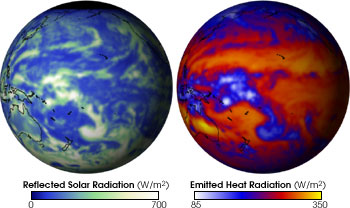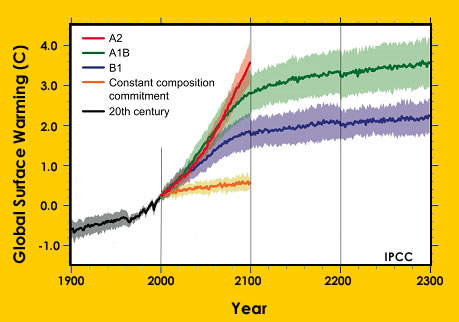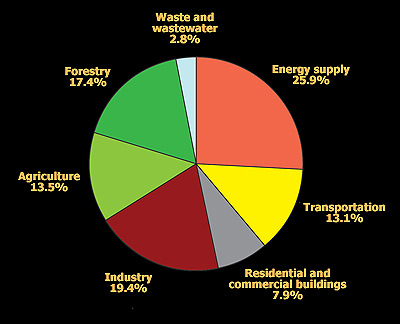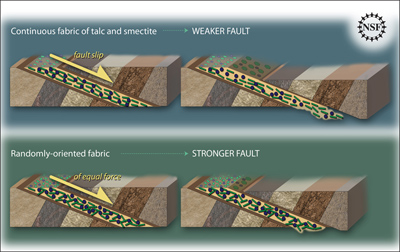
Courtesy of NASA
“Missing” Heat May Affect Future Climate Change
As greenhouse gases build up in the atmosphere, more of the energy that gets to Earth from the Sun sticks around the planet. This means that the amount of energy coming to Earth is greater than the amount of energy leaving, and is the cause of global warming today.
Where does the energy go? Scientists would like to know. They have been tracking heat energy in the atmosphere and ocean with satellites, ocean floats, and other instruments, but have not been able to find all the heat. The tools we use today to track heat can’t find about half of the heat that has built up on Earth in recent years. If the energy came to the Earth and has not left, then it must be around here somewhere, but where?
Large amounts of heat may be getting into areas of the Earth that we are not watching with satellites or other instruments. Warming ocean water has been found 3,000 to 6,500 feet deep in the ocean (about 1,000 to 2,000 meters). There may be more heat even deeper in the ocean, but we don’t have a way to take the temperature that far down.
Scientists are concerned that without better instruments, they won’t be able to track energy and understand where the heat goes. Tracking the heat on Earth is far more complicated than measuring temperatures at the planet's surface.
Knowing where heat is stored on Earth is important as we try to develop solutions to global warming. Engineers are developing ways to artificially change the world's climate to help slow warming. Without a good understanding of where heat energy is stored, these engineering solutions could cause unexpected changes.
"The heat will come back to haunt us sooner or later," says scientist Kevin Trenberth, who led the research. "It is critical to track the build-up of energy in our climate system so we can understand what is happening and predict our future climate."
The scientists think that more ocean sensors and studying the satellite data for the atmosphere in new ways may help solve the mystery of the missing heat.














